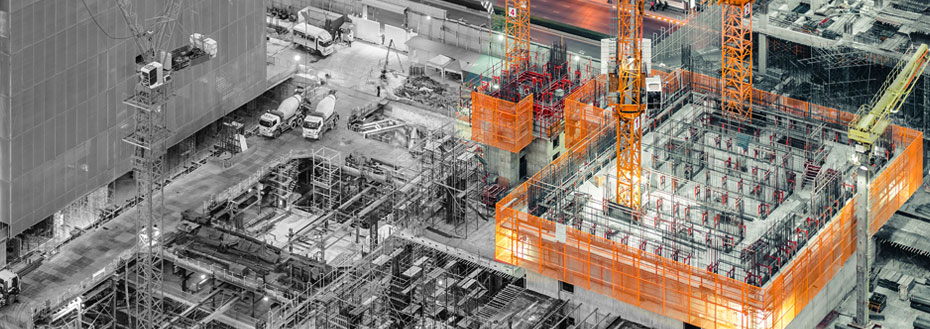In today’s construction landscape, complex infrastructure projects demand meticulous planning, precise execution, and seamless coordination among multiple stakeholders. The integration of Building Information Modeling (BIM) services has emerged as a transformative tool in this realm, offering unprecedented capabilities to streamline workflows, enhance collaboration, and optimize project outcomes. From roads and bridges to railways and airports, leveraging infrastructure BIM services has become indispensable for navigating the intricacies of large-scale projects efficiently. Let’s delve into how BIM services revolutionize the management of complex infrastructure endeavors.
Understanding Infrastructure BIM Services
Building Information Modeling (BIM) involves creating digital representations of physical and functional characteristics of infrastructure projects. Unlike traditional 2D drawings, BIM encompasses a comprehensive 3D model enriched with data attributes, enabling stakeholders to visualize, simulate, and analyze various aspects of the project lifecycle.
Infrastructure BIM services extend this concept to infrastructure projects, offering tailored solutions for roads, bridges, tunnels, railways, airports, and other civil engineering endeavors. These services integrate multidisciplinary data, including architectural, structural, mechanical, and electrical elements, into a unified platform, fostering synergy among diverse project stakeholders.
Streamlining Design and Planning
One of the primary benefits of leveraging BIM services in infrastructure projects lies in its ability to streamline the design and planning phases. By creating a digital twin of the infrastructure, engineers and architects can visualize the project in its entirety, identify potential clashes or design flaws, and iteratively refine the plans before construction commences.
Through advanced simulation capabilities, BIM services enable stakeholders to assess the performance of infrastructure under various conditions, such as traffic flow, structural stress, and environmental factors. This proactive approach minimizes design errors, optimizes resource allocation, and enhances the overall quality of the project.
Enhancing Collaboration and Coordination
Collaboration is essential in complex infrastructure projects involving numerous stakeholders, including architects, engineers, contractors, and government agencies. BIM services facilitate seamless collaboration by providing a centralized platform where all project-related information is accessible in real-time.
With cloud-based BIM solutions, stakeholders can collaborate remotely, regardless of their geographical locations. This fosters a collaborative environment where teams can communicate effectively, share updates, and resolve issues promptly, thereby mitigating delays and cost overruns.
Furthermore, BIM services promote coordination among different disciplines involved in the project, ensuring that architectural, structural, and MEP (Mechanical, Electrical, Plumbing) components integrate harmoniously. This integrated approach minimizes conflicts during construction, enhances constructability, and accelerates project timelines.
Optimizing Construction and Maintenance
During the construction phase, BIM services continue to play a pivotal role in optimizing processes and maximizing efficiency. Through 4D and 5D BIM, which integrate scheduling and cost data into the 3D model, project managers can visualize the construction sequence, identify potential bottlenecks, and optimize resource utilization.
Additionally, BIM services facilitate the use of prefabrication and modular construction techniques, where components are fabricated off-site and assembled on-site. This approach not only accelerates construction but also improves quality control and minimizes material wastage.
Beyond construction, BIM services also offer significant benefits for infrastructure maintenance and operations. By digitizing asset information and embedding maintenance schedules within the BIM model, asset managers can optimize maintenance activities, extend asset lifespan, and ensure optimal performance throughout the asset lifecycle.
Addressing Challenges and Driving Innovation
While the adoption of BIM services in infrastructure projects offers numerous benefits, it also presents challenges that must be addressed effectively. These challenges include interoperability issues between different software platforms, data security concerns, and the need for upskilling the workforce to leverage BIM technologies effectively.
Addressing these challenges requires a collaborative effort from industry stakeholders, including software developers, government agencies, and educational institutions. Standardizing data formats, enhancing cybersecurity measures, and investing in training programs can facilitate the widespread adoption of BIM services and drive innovation in the infrastructure sector.
Furthermore, emerging technologies such as artificial intelligence (AI), virtual reality (VR), and Internet of are poised to complement BIM services, further enhancing project outcomes. AI algorithms can analyze vast amounts of BIM data to optimize design parameters, VR simulations can provide immersive experiences for project stakeholders, and IoT sensors can provide real-time monitoring of infrastructure performance.
Conclusion
Leveraging infrastructure BIM services is essential for navigating complex projects efficiently in today’s construction landscape. By harnessing the power of digital modeling, collaboration platforms, and advanced simulation techniques, stakeholders can streamline design and planning, enhance collaboration and coordination, optimize construction and maintenance, and drive innovation across the infrastructure sector.

